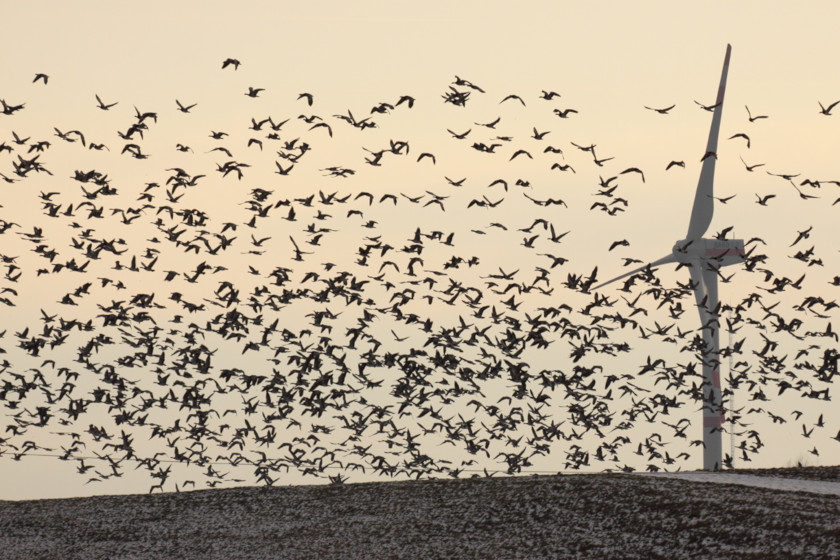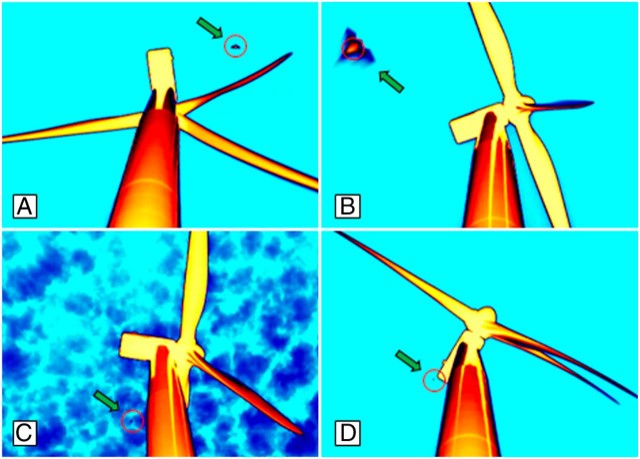Wind farms kill nearly a million bats a year and IA4Birds project works to prevent it
A study led by the Doñana Biological Station (EBD), a research centre belonging to the Spanish National Research Council (CSIC), warns about the "devastating" impact that wind farms have on bats in Cádiz and, possibly, on those in other areas of Spain.
This vital discovery has been made by researchers from the EBD-CSIC, the University of Lund (Sweden) and the University of Seville, after analysing bat mortality data collected between 2005 and 2016 on wind farms in the Andalusian province of Seville. The results of the study have been published in the Acta Chiropterologica journal. This is a problem that goes hand in hand with the main objective of the IA4Birds project, which uses artificial intelligence in audiovisual devices to monitor bird populations, prevent threats and decide whether or not a site is suitable for the construction of a wind farm.
The environmental monitoring plans in Cadiz involve the year round, daily presence of watchmen at the wind farms dring daylight hours. The mission of the watchmen is to locate the animals that have been killed or injured by the wind turbines and to order the turbines to stop when there is a risk of collision with a bird or flock, especially in the case of endangered species.

This monitoring plan is one of the most intensive plans in Spain and is considered exemplary. The data from this plan put the number of bat carcasses found during the study period at 2,371. These carcasses belonged to at least 15 different species out of the 20 found in the province of Cadiz. The study focused on analysing the 582 incidents found in 2011, the year for which the most complete information was available.
High mortality rates
To estimate the actual mortality rate, the scientists conducted an experiment in which more than a hundred bat carcasses were laid out across nine wind farms to be used as search bait. The aim was to assess the efficiency of the search by the watchmen and the time the carcasses remained in the field.
Only 17 % of the placed carcasses were located by the watchmen, despite the fact that the wind turbines were checked daily and were available to them for at least four consecutive days. Furthermore, the search for carcasses was limited to clean areas (platforms and runways), which account on average for less than 15 % of the potential search area. Adjusting this detection bias, the researchers estimated an average mortality rate of 41 bats per turbine per year in the study area.
These results estimate that between 33,000 and 37,000 bats died on wind farms in Cádiz in 2011. Furthermore, according to the study, some of the surveyed areas recorded the highest wind farm mortality rates in the world documented to date.
"It is worth remembering that bats have a very low birth rate of one (sometimes two) offspring per female per year," says Sonia Sánchez, lead author of the study.
"Our data show a "devastating" impact on bat populations, which in this case affects nonmigratory species, unlike in other parts of the world, such as northern Europe or North America, where the most affected bats are migratory bats," she continues.

New monitoring methods
The first conclusion of this study is that these environmental monitoring programmes are not efficient for searching for bats and probably not for small birds either, as they are focused on large gliding birds and obscure very high mortality rates.
The authors therefore recommend the implementation of new monitoring methods, which are more suitable for small animals, as well as studies to assess the actual search efficiency of environmental monitoring programmes.
The second conclusion reached by the researchers is that effective preventive and mitigation measures are urgently needed to protect this group of mammals from the development of renewable energies, as there are many endangered species of bats.
In this regard, Sánchez recognises the importance of wind energy as a renewable energy source to combat climate change but calls for the need to balance energy generation with biodiversity protection.
"Mitigation measures, such as temporarily shutting down turbines during periods of high bat activity, have proven to be vital to reducing the impact on these species and achieving the 'green energy' we hear so much about," she concludes.